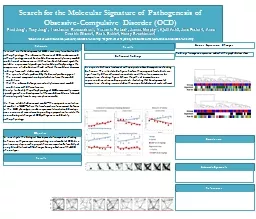PPT-Rationale Research
Author : obrien | Published Date : 2022-05-18
on the development of OCD is necessary to understand its pathophysiology This is because the cause of OCD is unknown and pathophysiology cannot be elucidated unequivocally
Presentation Embed Code
Download Presentation
Download Presentation The PPT/PDF document "Rationale Research" is the property of its rightful owner. Permission is granted to download and print the materials on this website for personal, non-commercial use only, and to display it on your personal computer provided you do not modify the materials and that you retain all copyright notices contained in the materials. By downloading content from our website, you accept the terms of this agreement.
Rationale Research: Transcript
Download Rules Of Document
"Rationale Research"The content belongs to its owner. You may download and print it for personal use, without modification, and keep all copyright notices. By downloading, you agree to these terms.
Related Documents














